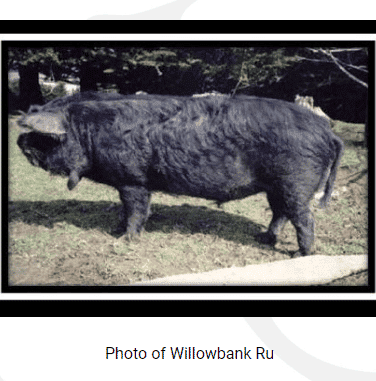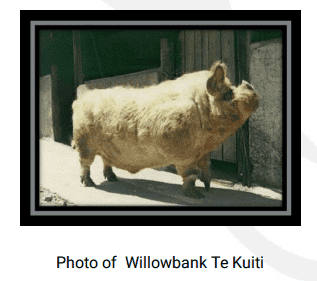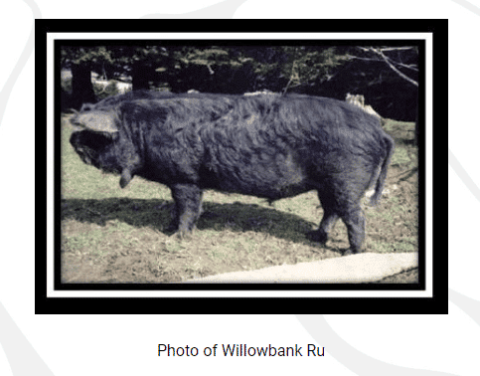
JOIN US
GET OUR KUNEKUNE
NEWSLETTER
New and highly discounted products, fresh and hot stories & useful information

New Zealand Pigs
Where do KuneKune Pigs Originate from?
Let's explore the history of KuneKune pigs. Understanding where the New Zealand pigs originated from and hearing the story of the KuneKune origin will better help you understand how special the breed truly is.
The History of the New Zealand Pigs
The history of the KuneKune pig in New Zealand is an interesting tale of survival, adaptation, and appreciation. This unique breed, known for its friendly temperament and distinctive physical characteristics, has a surprisingly deep-rooted history in the country. From near extinction to a cultural icon, the KuneKune pig has firmly established its place in New Zealand's heritage.
The journey of the KuneKune pig in New Zealand begins with its arrival from the Polynesian Islands in the 18th century. These pigs, originating from China and Vietnam, were introduced to New Zealand by early Māori settlers as a valuable food source. The Māori people recognized the breed’s exceptional attributes, such as its docile nature and ability to thrive in diverse environments.
For hundreds of years, the KuneKune pig was a crucial resource for the Māori population, providing not only sustenance but also playing an essential role in cultural and ceremonial practices. These pigs were highly esteemed, and their breeding was carefully managed to ensure their survival. However, with the arrival of European settlers in the 19th century, the population of the KuneKune pig declined rapidly, largely due to the introduction of new pig breeds that were raised for commercial purposes.
By the late 20th century, the KuneKune pig was on the brink of extinction. Only a handful of individuals remained, scattered throughout the country. However, the breed was granted a new lease on life when two farming enthusiasts, Michael Willis, and John Simister, embarked on a mission to revive the KuneKune pig. In the late 1970s, the pair began searching for the remaining pigs and initiated a breeding program to protect and preserve the breed.
The efforts of Willis and Simister successfully led to the reemergence of the KuneKune pig. Through careful breeding, they not only saved the breed from extinction but also ensured its long-term survival. This remarkable achievement caught the attention of other individuals passionate about heritage breeds and conservation. The KuneKune pig slowly gained popularity among smallholders and hobby farmers, becoming known for its friendly and gentle disposition.
The KuneKune pig's popularity continued to soar in the late 20th and early 21st centuries. It was increasingly recognized for its suitability in sustainable farming practices, considering its small size, easy maintenance, and adaptability to various climates. In addition, the KuneKune pig was appreciated for its role in regenerative agriculture, contributing to soil health and biodiversity preservation. Furthermore, the KuneKune pig became a symbol of New Zealand's connection to its indigenous culture and heritage. The Māori people, who had cherished the breed for centuries, actively promoted the KuneKune pig as a cultural icon and a reminder of their ancestral ties. Its friendly nature also made it a popular attraction at petting zoos, contributing to New Zealand's tourism industry.
Today, the KuneKune pig continues to thrive in New Zealand, both as a vital part of the agricultural landscape and as a beloved cultural symbol. Its history serves as a reminder of the importance of conservation efforts and the value of preserving indigenous heritage. The successful revival of the KuneKune pig stands as a testament to the dedication and passion of those who worked diligently to ensure its survival, allowing this remarkable breed to endure and flourish for future generations to enjoy.
This is a journey into the New Zealand pigs called KuneKune pigs.
Where KuneKunes Pigs Originate
First, the origin of the KuneKune has been up for debate for some time. Join me as we dig further into the history of KuneKune pigs. Some believe they are an Asian descent. They are often referred to as the New Zealand pigs. While others believe that whalers and traders brought them into New Zealand. Indeed, the exact origin are unknown but there is much speculation surrounding the breed. Indeed, it is difficult to say for certain where the KuneKune pigs originated. At the beginning of our story, we will discuss where we know they came from and that is New Zealand.
New Zealand Pigs called KuneKune Pigs
First, New Zealand is a land rich with the history of KuneKune pigs. New Zealand is an island off the Southwest Pacific Ocean. It is an urban country with a north and South Island. The most populated areas are Auckland, Christchurch, Wellington, and Hamilton.
Currently, our story begins one night when Michael Willis and John Simister of Staglands are enjoying some gin at 3:00 in the morning. John began to tell Michael about the breed of KuneKunes describing them with their roly-poly fat, short legs that just kept their tummy off the ground, their short, upturned snout, and their tassels or bells hanging under their chin. Michael did not believe John and thought this breed was something from Walt Disney’s world of fantasy. Furthermore, it would be another 12 months before he would see a KuneKune for himself when visiting Hilldale Zoo. Suddenly, Michael fell madly in love at first sight.
Therefore, he searched and searched for the New Zealand pigs called KuneKunes with extraordinarily little success. Likewise, his first break came with a phone call from a guy named Weasel, saying he had purchased a pair for him for $3.00 each. On the other hand, when he arrived, the only resemblance to kunekunes was their wattles. One had 2 wattles and one had 1 wattle. Finally, he took them so as not to hurt the man’s feelings.


The journey continues for more New Zealand pigs.
After that, the next stop was at Charlie Marshall’s, and he had more from the same litter as Weasel. Michael and John both bought 2 pigs each for $10 for the two. In fact, some were missing wattles, some had wattles, and some only had 1 wattle.
At the same time, the next help came from Timi Kereopa, known as Kelly. After many stops at many Māori homes, finally they found some kunekunes. The family told him they were down at the riverbed and if they could catch them, they could help themselves. However, they found a sow with about ten piglets of various ages. Indeed, they were able to gather some up, but the book does not mention how many they got. It is important to note, they do mention they suspect they are not purebred.
Also, at the next stop, they were extremely pleased when they found two New Zealand pigs, kunekunes, that looked just like the description he had originally been told. The Māori people they met would not accept payment for them but generously gave them the pigs.
Along with this trip, the next pig would come from a man named Paddy. The boar did not look purebred but was different from the others that they had so far. Then they got a big sow from another gentleman who said she was as close to being a purebred as they came. Later, through several different contacts, they came upon a man named Ru Kotaha who had some kunekunes with wattles and just as described to him. Furthermore, he gave them a pair after hearing their story about their search for kunekunes and refused to take money. At this point, they had thirteen pigs.
In fact, another Māori family got a beautiful sow and boar and paid $150 for the pair. Finally, their next stop would take them to John Wilson. He was described as a hermit who was extremely protective of his pigs and anyone caught messing with them would be shot.
John Wilson - a huge contributor to amazing New Zealand pigs.
John Wilson was nothing like people had described him to be. He had at least thirty kunekunes running in and out of the bushes. They were so excited to be greeted with a wave and a smile. John Wilson had been gathering up purebred New Zealand pigs, kunekunes, to preserve them over the years. He was upset that they were dying out and that no one was doing anything about it. When he heard the story from Michael and John Simister, he was more than willing to help.
This is where they received the boar, named Kelly. Kelly was a magnificent creature, huge for a Kune and a light gold in color. He was purchased for $50 even though John Wilson did not want to take any money for him. They also got a young black and brown marbled sow about nine months old and a hand-reared gilt about three months old.
How did they divide the pigs they gathered?
Now they had 18 pigs! This went down in the history of KuneKunepigs. They wrote down two lists of the pigs, splitting the sexes and quality. They flipped a coin to see which list they were going to get. John Simister of Stagland beat Kelly. From this gathering two breeding programs were started. Hoping to start the basis of some order in the pig’s future, Michael contacted the Pig Breeders Association which would handle the registrations of the kunekunes. At that time, he established 6 sow lines and 3 boar lines.
The original lines that he named for the boars were Willowbank Ru, Willowbank Te Kuiti, and Willowbank Te Whangi. The original sow lines were Willowbank Waitomo, Willowbank Kereopa, Willowbank Awakino, Willowbank Marokopa, Willowbank Kopu, and Willowbank Tammerdale.
**Information from this article was gathered from the book written by Michael Willis, published by Whitcoulls in 1982, “Some of My Best Friends Are Animals”.
In conclusion, while we did not find out where KuneKune pigs originate from, we know they were called the New Zealand pigs and we did learn they began their history in New Zealand. We traveled along with the recovery efforts and learned that eighteen pigs began the recovery efforts of the breed.
The men who brought the New Zealand pigs called KuneKune Back from the Brink
This video will help you understand more about where KuneKune pig originated from and more about the journey to recover this breed and about the history of KuneKune pigs.
A Journey to the UK: The first country other than New Zealand to have the New Zealand pigs
In the early 1990s, a few KuneKune pigs were imported to the UK, making it the first European country to have these charming creatures. These initial pigs formed the foundation stock for breeding programs in the UK, leading to the establishment of a growing KuneKune pig population in the country.
Since their introduction, KuneKune pigs have become increasingly popular and have found homes on farms, private estates, and even as pets. The breed's friendly and docile nature makes it an ideal choice for smallholder farmers and individuals seeking a unique petting animal. Furthermore, with their grazing ability and small stature, KuneKune pigs have gained recognition as effective land management animals that can contribute to sustainable farming practices.
The preservation of the KuneKune pig breed has also been supported by several societies and associations, such as the British KuneKune Pig Society and the Rare Breeds Survival Trust. These organizations work tirelessly to maintain breed standards, provide education about the breed, and facilitate responsible breeding practices.
Today, the KuneKune pig population in the UK continues to thrive, with an increasing number of people appreciating their many qualities. Their popularity can be attributed to their unique appearance, small size, and gentle temperament. As interest in sustainable and ethical farming practices increases, the KuneKune pig's ability to thrive on grazing land has also gained recognition.
In conclusion, the history of KuneKune pigs in the UK is relatively recent but rich in its journey from New Zealand to British farms and households. From their origins as treasured pets of the Māori people to their current status as popular smallholding animals, KuneKune pigs have captured the hearts of many in the United Kingdom. They have not only added diversity to the country's pig breeds but have also become an essential component of sustainable
farming practices.
Registry Office
17500 Hamilton Arms Court Dewitt, VA 23840